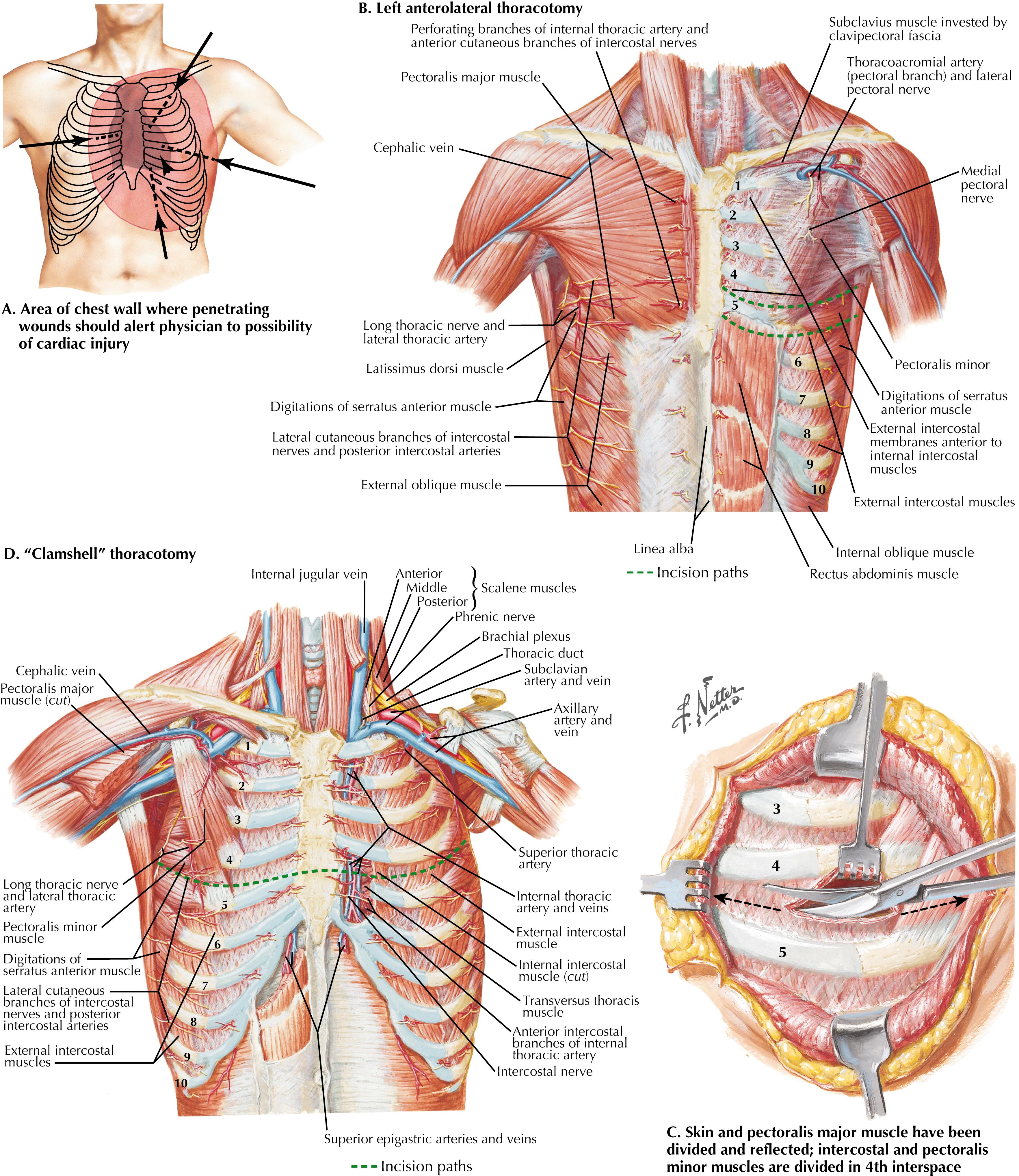Physical Address
304 North Cardinal St.
Dorchester Center, MA 02124
Resuscitative emergency thoracotomy can be a lifesaving procedure for patients in traumatic cardiac arrest. As a salvage maneuver, the associated mortality is high, and the search to clarify indications has sparked controversy since its first description. Patients who are pulseless with signs of life after penetrating thoracic trauma have the highest chance of survival after emergency thoracotomy ( Fig. 51.1A ). Additional indications include penetrating extrathoracic trauma and patients with signs of life after blunt injury. Knowledge of indications and anatomy is crucial to good patient outcomes.

Five main maneuvers can be performed, depending on the findings:
Thoracotomy
Open pericardium
Cardiac massage
Damage control
Aortic cross-clamp
Become a Clinical Tree membership for Full access and enjoy Unlimited articles
If you are a member. Log in here